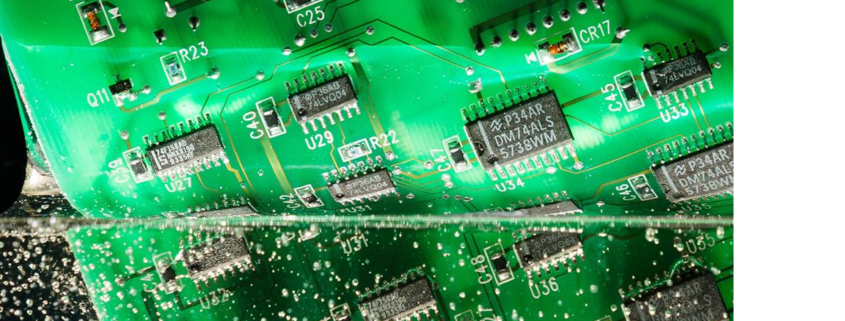ADDITION CURE
Curing Two-Part Silicones for Potting, Encapsulating, and Mold Making
Two-part silicones are used for potting electronic assemblies, encapsulating electronic components, and making molds for cast urethane rubber. Each part contains functional ingredients, and the two parts are mixed together in a specific ratio. The entire system requires curing so that the silicone hardens and acquires its end-use properties. Curing, the crosslinking of polymer chains, is a chemical reaction that is accelerated using a catalyst. Sometimes, post-curing is also used. For design engineers who want to learn more about curing systems, this Gluespec Q&A answers frequently asked questions (FAQs).
What are some common systems for curing two-part silicones?
Two-part silicones that are used for potting, encapsulating, and mold making are usually either addition cured, or condensation cured. Addition curing uses a platinum catalyst for crosslinking or curing. Condensation curing uses an organotin catalyst instead. These are not the only curing systems for silicones, but they are the most common types for the two-part silicones that are used in potting, encapsulating, and mold making.
What are some of the advantages of addition cure silicones?
Addition cure silicones have quick curing times and very low shrinkage rates. Importantly, they are not subject to reversion, an unwanted process that returns a catalyzed silicone to a liquid state. Addition curing is also less prone to silicone migration, which can contaminate electronics, and provides more durable coatings. Plus, post-curing is not required for the silicone to achieve its ultimate properties. This reduces curing costs and speeds cycle times.
What are some of the disadvantages of addition cure silicones?
Cure inhibition, or catalyst poisoning, can occur if an addition cure silicone contacts amines, sulfur, phosphides, PVC plasticizers, sulfur vulcanized rubber, some epoxy resin catalysts, or tin catalyzed silicones. Cure inhibition is also caused by contact with the latex, vinyl, or neoprene gloves that workers wear to handle assemblies. In machine shops, oils in the air can cause mild cure inhibition. There is also the potential for cure inhibition if there is contact between an addition cure silicone and acrylics.
Is there anything that can be done to overcome these disadvantages?
Accelerated curing with heat, the careful control of substrates, and using an additional catalyst have all been shown to be effective in overcoming cure inhibition.
What are some of the advantages of condensation cure silicones?
Condensation cure silicones work well with most substrates and resist cure inhibition. They are not subject to reversion if the cured silicone has access to the atmosphere. They have a relatively low risk of cure failure and can support deep section curves.
What are some of the disadvantages of condensation cure silicones?
Condensation cure silicones are not the best choice for use with SBR rubber. They also have the potential for reversion if the silicone is totally enclosed and subject to heat and/or pressure over time. For example, reversion may occur if a condensation cured silicone is subjected to 150°F temperatures in a completely sealed environment for a period of several months.
Do two-part condensation cure systems require atmospheric moisture for curing?
No, they do not. The moisture that is needed for crosslinking is included in the system.
What about one-part silicones?
One-part silicones are also available for potting, encapsulating, and mold making. For example, one-part room temperature vulcanizing (RTV) silicones are typically moisture cured. The moisture that they need for curing usually comes from the atmosphere. There are also one-part heat cured silicones that use an addition curing system. Because heat initiates cross-linking, the system components can be combined in an easily handled package and crosslinking will not occur until heat is applied.



Leave a Reply
Want to join the discussion?Feel free to contribute!